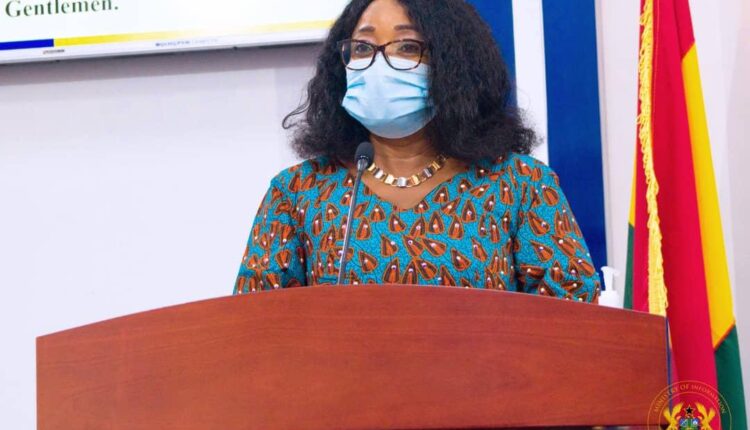Government begins E-payment of LEAP beneficiaries
The Ministry of Gender, Children and Social Protection has announced an electronic payment platform for beneficiaries on the Livelihood Empowerment Against Poverty (LEAP).
Addressing journalists at the Information Ministry during the “Meet The Press” series on Wednesday, September 2, 2020, the sector minister, Cynthia Mamle Morrison stated that all LEAP households have been connected to financial services through the e-payment (Ezwich) platform.
“Five (5) cycles of LEAP cash grants have been paid to 334,084 households to help smoothen their daily consumption. A total of 1,451,656 extremely poor beneficiaries are currently on the LEAP register.
“Other achievements chalked under the LEAP include; development of an emergency payment strategy for LEAP in the wake of COVID 19 pandemic, regular engagements with district Social Welfare officers, participating financial Institutions and GHIPSS to discuss and provide solutions to electronic payment challenges,” the minister said.
According to the minister, 73% of LEAP beneficiaries have been enrolled onto the National Health Insurance Scheme with 5,522 individuals linked to other complementary and productive activities.
She gave the breakdown as follows; Labor Intensive Public Works- 3,054, Japaneese Social Development Fund -1,235, Village Savings and Loans Association -348 and Complimentary Income Generating Scheme -537.
Touching on data collection, Madam Morrison also mentioned that the Ghana National Household Registry had been instituted to collect data on the vulnerable in Ghana and become the center of targeting for social interventions programs including LEAP, LIPW, NHIS among others.
This data, according to her, is useful for planning by the various Metropolitan, Municipal, and District Assemblies (MMDAs), Academia, Non-Governmental Organizations (NGOs), Civil Society Groups and other agencies in social development.
The objective of the GNHR database is to improve targeting efficiency and effectiveness and make it easier for the government to identify and target the poor and vulnerable for all social protection interventions in Ghana.
“Currently, Upper West and Upper East regions have data on socio-economic status of 137,565 and 184,125 households respectfully. Northern, North East and Savannah have data on the socio-economic status of 140,000 households so far.
“The GNHR is currently continuing with data collection in the North East, Northern, and Savannah Regions to obtain an updated and more comprehensive database on poor and vulnerable persons in the country”, she said.
FACT SHEET
- The first disbursement of cash grants was done in March, 2008 with 1, 654 households in 21 pilot districts paid.
- In 2009, the LEAP Programme expanded its reach to 54 districts from 21 districts. This expansion was brought about as a result of the expansion of the eligibility criteria to include extremely poor households with elderly persons aged 65 years and above without productive capacity and persons with severe disabilities.



Has there been any increase of beneficiaries in the area of districts?
Fact check indicate 54 as at 2016 or there about.
The Ezwich platform has been created and is in used for the payment of LEAP beneficiaries for the past 8 or so years. It’s not new.